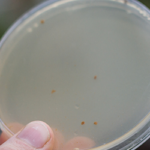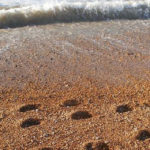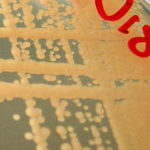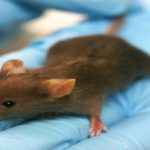Sweena Chaudhari
Sweena has a PhD in Cardiovascular Immunology from the Julius Maximilians University of Würzburg.
Articles by Sweena Chaudhari
Cloning Strategies – a Whole Lot of Options to Choose Molecular cloning has come a long way from simple restriction digestion-ligation cloning strategies to a large number of highly efficient alternatives. Broadly classified, cloning techniques can be divided as sequence dependent and sequence independent strategies. Sequence-dependent strategies are based on restriction digestion-ligation techniques or site-specific…
A lot of research experiments require the use of a eukaryotic host as opposed to E. coli due to its greater conformity and suitability in expressing eukaryotic proteins. This is the reason why yeast cells have gained importance as cloning and expression hosts. For protein expression studies to hybrid screens, many applications require insertion and…
Studying DNA–protein interactions is an important aspect of molecular biology. Researches use a variety of methods to study these like the chromatin immunoprecipitation (ChIP) assay, electrophoretic mobility shift assay (EMSA), DNA pull down assay, luciferase reporter assay, filter binding assay, yeast one hybrid system, etc. Another interesting assay that helps investigate DNA–protein interactions is the…
Yeasts, such as Saccharomyces cerevisiae, Schizosaccharomyces pombe and Pichia pastoris, are routinely used in biology research labs around the world. Yeasts are easy-to-culture, unicellular eukaryotes, and make excellent model organisms because of the similarity of their genes and proteins with those of their mammalian counterparts. Yeast cells are used to study gene function, protein interactions,…
It often happens that you do everything right with a PCR. You have perfectly isolated template DNA, used sterile tubes and tips, used clean reagents, and said a quick prayer to the PCR Gods. And still, something unknown messes up your results. This unknown at work is generally a PCR inhibitor. Before you blame it…
The Cre-loxP recombination system is routinely used for the generation of mouse knockouts. In part 1 of this mini-series, I introduced the concept and applications of Cre-loxP. As with any other technology or research tool, it has limitations and pitfalls that need to be considered while planning experiments or interpreting results. This article will take…
You might have heard of the Cre-loxP system even if you are not directly working with genetic manipulation. The Cre-loxP system is an ubiquitous technology for genetic manipulation and a mainstay in mouse research labs. With this system you can delete genes in cells, specific tissues and even whole organisms! You can start to master this system by…
Animal models have helped make enormous discoveries and breakthroughs in the last few decades. From Pasteur’s use of sheep to test the ‘Germ Theory’, Pavlov’s classic conditioning experiments in dogs, to Dolly the first cloned mammal, animal research has come a long way. Today, most drugs, vaccines and other pharmaceutical products for medical use are…
An essential step in mouse breeding is genotyping them to determine the genotype of every mouse in the litter. It is also useful to differentiate between various groups of experimental mice if any confusion arises. When genotyping, you will be hunting for the specific gene that you want your mice to have or a genetic…
Researchers have always been in search of model organisms that can be used to study and explore biological phenomena to make discoveries that can be extrapolated to more complex higher organisms like humans. Of the various model organisms developed and used, starting from the ubiquitous E. coli and S. cerevisiae to the humble D. melanogaster…
Anyone working with laboratory animals has probably realized that simply putting two animals together does not always yield new offspring and reliable continuity of the animal line – unfortunately animal husbandry isn’t that simple! Of course, apart from making sure that the two animals put together are from different genders, there are a lot of…
The word ‘retrovirus’ evokes images of HIV, the AIDS pandemic and a desperate worldwide effort to defeat this mighty adversary. But on the flip side, scientific research has managed to tame the virus and use it as a tool for advancement. Retroviruses are commonly used to introduce genes into mammalian cells to express or knockdown…
Retroviral transduction is becoming a popular choice for gene delivery into mammalian cells and has multiple advantages over other techniques. If you decide to start work on this useful technique, here is how you can go about it: Step 0: Obtain permission First and foremost, do you have the permission, authorization, and training to work…
Murine bone marrow derived dendritic cells (BMDCs) are one of the easiest primary cell cultures to generate. The beauty lies in the fact that in the end you have a large quantity of robust DCs that can be matured and used to study a variety of DC functions and DC-T-cell interactions. But there are a…














